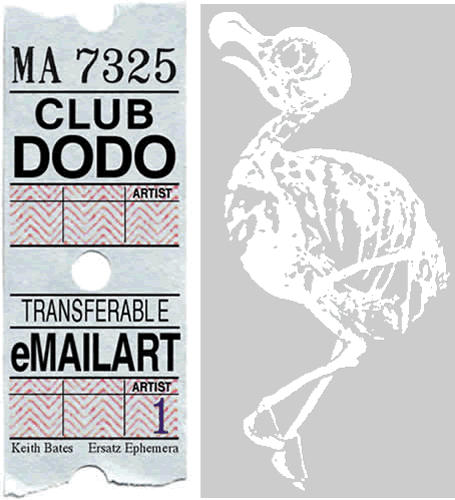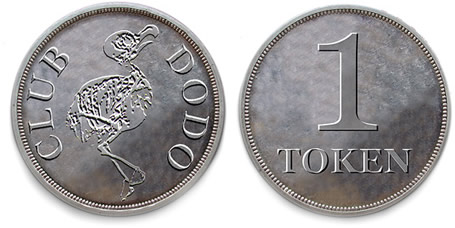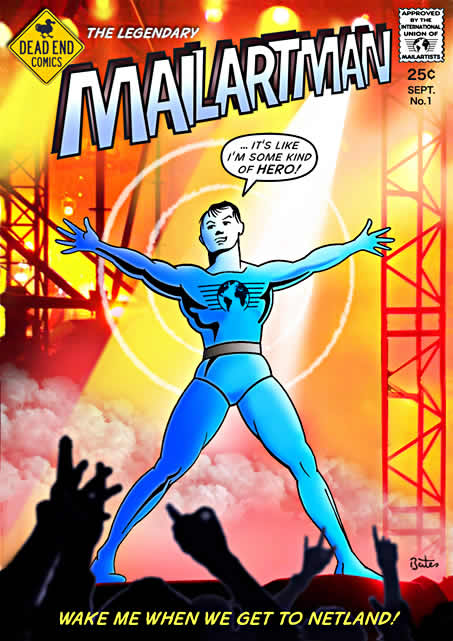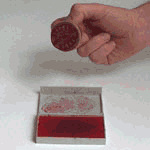Long Live the Dodo
A few years ago Michael Lumb compared Mail Art to the dodo and articulated what many old-school mailartists were sensing – that Postal Art wasn't the dynamic force it once was. Artists, like everyone else, are re-assessing their communication needs. Sharp increases in postal costs, poorer service and the closure of small Post Offices have signalled hard times for snail mail as electronic mail wins favour. Fast connections are now cheap and convenient, and computers themselves are cheaper than ever.

An artist who is interested in networking in the twenty-first century is likely to regard the internet as the vehicle of choice, despite the lack of tactile and sensual qualities compared to paper-based Mail Art. Michael Lumb pointed out that you can't email books “in their proper form”, so the task of finding successful, “improper” forms for the unprinted page has resulted in e-book readers successfully attracting readers away from paper. The long-established openness of Mail art needs to accommodate digital forms of communication and creativity. As transfer speeds increase, screen definition improves, and the virus threat associated with email attachments is managed, objections to Email art will diminish and its inherent qualities will become valued.

It is tempting to paint Mail Art as the dodo, doomed to extinction, but whilst a postal service survives, artists will undoubtedly be drawn to the enduring qualities of physical exchange, qualities beyond the realm of electronic communication. Indeed, one of the jobs of the artist has long been to breathe life into materials and techniques that have been left for dead by mainstream society.

Mail Art will not be replaced by Email Art, instead the electronic exchange of artwork increases the choice available to networkers. And traditional mailartists should take pride in having provided a networking model of free exchange that has been embraced by the internet.
Mail Art is Dead. Long Live Mail Art.



